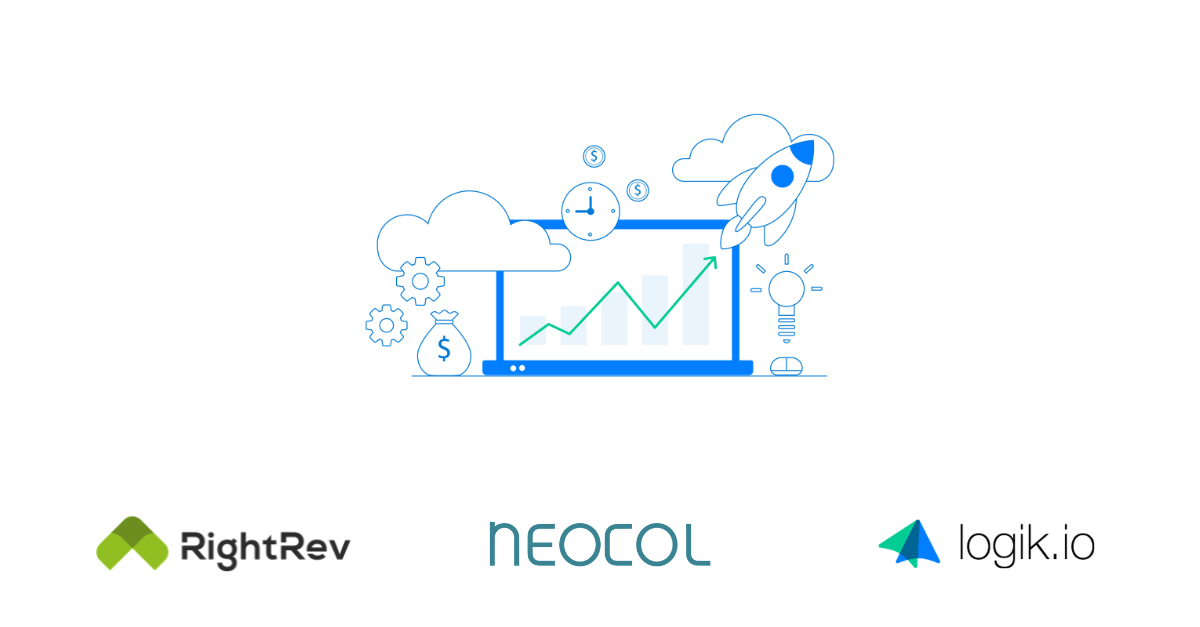The sales cycle has lots of moving parts. Ultimately, though, it’s all about converting leads into paying customers.
Part of that process involves back-office functions like drafting proposals, collecting payments, recognizing revenue, and more. This workflow bridges initial customer interest and final revenue generation, also known as the quote-to-revenue (or quote-to-cash) process.
Done right, streamlining the quote-to-revenue process will increase conversion rates and customer satisfaction. When quotes are seamlessly transitioned throughout the sales pipeline, companies become more credible, efficient, and responsive to customers.
Leveraging data to optimize business operations has become increasingly important in today’s professional world. The era of acting on hunches has given way to data-centric decision-making that often drives improvements in the quote-to-revenue journey.
The purpose of this article is to highlight the transformative power of data-centricity within the quote-to-revenue process. By exploring the growing need to integrate robust data strategies into every phase of this critical cycle, it becomes evident that a data-driven mindset is critical in achieving sustained growth and success in a competitive business landscape.
What Is Quote-to-Cash?
The quote-to-revenue process is also often called quote-to-cash (Q2C or QTC). Essentially, this workflow includes the entire end-to-end cycle from generating a sales quote to receiving, recording, reporting, and disclosing payment. It encompasses sales, pricing, quoting, contract management, billing, and revenue recognition.
Efficient revenue management within QTC involves employing a strategic approach to pricing, contracts, and billing in order to optimize revenue generation. By streamlining this process, businesses can effectively manage their sales pipeline, drive profitability, and ensure compliant revenue recognition.
Who Owns the Quote-to-Cash Process?
Ownership of the quote-to-cash process is typically shared among various departments.
The sales team usually initiates the workflow by generating quotes and driving revenue. Meanwhile, revenue operations (RevOps) strive to coordinate and align sales, operations, and customer success. The finance team also plays a pivotal role in billing and accounting by generating accurate and timely invoices, recognizing revenue, and producing transparent financial statements.
A collaborative effort among the sales, RevOps, and finance teams keeps the quote-to-cash process moving smoothly from the initial sale through revenue realization.
The 8-Step Quote-to-Cash Process
The quote-to-cash process (also called quote-to-revenue) can be broken down into eight steps. These can vary by industry but tend to look like the following.
1. Product Configuration
The first step in the sales process is combining products or services that satisfy paying customers. This package must then be communicated clearly to the sales teams so they can capitalize on all cross-sell and upsell opportunities.
2. Pricing
Next, developing a pricing strategy that preserves margins and appeals to customers is necessary. Companies should make sure to avoid common pricing mishaps that other businesses have accidentally made in the past—like when the delivery cost exceeded the purchase price! In addition, it’s critical to arm the company’s sales reps with winning discounts, incentives, and promotions so they can successfully close deals.
3. Quote Creation
Step three in the quote-to-cash process is to generate a timely and accurate quote for the customer. This is a crucial step in the sales cycle because it directly impacts the customer experience. Send a quote with errors or too slowly and potentially lose the customer.
4. Contract Management (Creation, Negotiation, and Execution)
Moving through the contract and revenue management stage of the sales lifecycle leads to three distinct business processes: contract creation, negotiation, and execution. The contract must accurately capture all the deal details (terms and conditions) and remain visible to all necessary parties throughout the process.
During the contract negotiation, it’s necessary to monitor ongoing changes and keep track of multiple iterations. After all the approvals have been obtained, it’s time for the contract to be finalized with signatures.
5. Order Management and Fulfillment
Once the contract is signed, the operations team can process and deliver the order. An efficient order-to-cash workflow will ensure that all the pricing and contract terms are communicated correctly to the appropriate teams during this stage.
6. Billing and Invoicing
At this point in the billing process, the finance team calculates the charges and invoices the customer. Of all the business processes involved in QTC, this one impacts cash flow the most, making it essential that companies avoid delayed payments.
7. Revenue Recognition
Next, the payment is ideally received and recorded. Determining when and how to recognize expected revenue in compliance with accounting standards can be challenging, particularly in the SaaS industry. That’s why this is a great time to consider implementing a revenue recognition automation solution like RightRev and start benefiting from revenue recognition automation.
Finance teams must also produce timely and accurate financial reports.
8. Renewal
The final stage of the Q2C process is to manage recurring renewals and customer retention. Keeping tabs on customer data is imperative to ensure upcoming renewal dates aren’t overlooked. Additionally, data can be used to improve subsequent sales cycles and to adjust account management tactics.
What Initial Challenges Do Customers Face When Engaging With a Quote-to-Revenue Transformation Project, and How Can You Better Prepare? (Challenges)
Several bottlenecks commonly occur during the quote-to-revenue process. Some of these challenges are explored below.
Challenge 1: Forgetting to Account for Future Changes
Naturally, a company’s pricing and/or packaging might change down the road. Businesses should take a proactive stance and ensure that all their backend systems are scalable and can handle any future modifications.
Choosing highly flexible, adaptable, and scalable automation software is recommended. The right QTC solution can change in lockstep with its clients and won’t hold them back.
Challenge 2: Not Taking a Holistic Approach
Businesses should consider the entire end-to-end process and all reporting needs upfront to avoid being caught off-guard later on. Additionally, a data-centric approach will help mitigate inefficiencies resulting from siloed operations by minimizing errors, managing customer information seamlessly, and streamlining the entire process, ultimately preventing a poor customer experience and bolstering retention.
Challenge 3: Relying Too Heavily on Manual Processes
Heavy reliance on manual data entry, approval processes, and paperwork slows things down and introduces errors. Automating a company’s revenue operations and revenue recognition processes makes it dramatically easier to comply with accounting standards and reduce mistakes. Businesses must keep in mind that inaccurate revenue recognition raises legal and regulatory consequences, in addition to impacting investor confidence.
How can companies prepare for these Q2C challenges? Here are some suggestions.
1. Identify Key Stakeholders Early
Consider the data that revenue teams rely on from upstream systems and involve cross-functional teams that manage and analyze the same data early in the scoping phase. Jenn Meehan, SVP of Revenue Automation at Neocol, shares, “All too often, we see that our clients aren’t identifying all of the key stakeholders that need to be involved in the project.”
Critical stakeholders are often excluded from the project because of a lack of resources to meet critical deadlines. Still, they’re pulled into the project mid-way, and by then, their input is too late or requires some areas to be re-scoped, which can result in delays and added costs.
Key takeaway: Companies should aim to identify the various areas the project will impact, including upstream processes that will affect the revenue data downstream. They must consider how changes might alter existing processes and create opportunities for new streamlined paths.
Engaging key stakeholders early will ensure proper documentation of requirements, resulting in successful implementations and the efficient adoption of new systems.
2. Prioritize Change Management
Change can stem from audit adjustments, adopting new revenue models, new organizational leadership, or new system implementations. While nobody likes change, setting the expectation for the transition early will ensure department-wide alignment.
Letting team members embrace the change will help them understand that it aims to alleviate current pain points, reduce burnout, and reach the ideal state of process efficiency.
What Are the Benefits of a Streamlined Q2C Process?
There are many advantages that come from employing a data-centric and streamlined quote-to-revenue process. By integrating and analyzing real-time data, finance teams receive access to updated and accurate information throughout the entire sales cycle.
This translates into swift and accurate quotes, expedited transactions, fewer errors, and optimized order fulfillment, all of which improve the customer experience.
Listed below are some additional benefits.
Improve the Sales Process
Efficiency, speed, and accuracy in quoting, ordering, and invoicing amplify sales productivity and customer satisfaction, retention, and boosting overall performance.
Minimize Quoting Errors
Logical and thoughtful Q2C processes reduce mistakes by automating, standardizing, and integrating systems for fast and precise quoting and order completion.
Reduce Order and Invoicing Errors
Automating the quote-to-revenue process is a great way to minimize mistakes, clarify steps, guarantee accuracy, and synchronize data for seamless order and invoicing processes.
Increase Customer Retention
A well-organized quote-to-cash workflow ultimately boosts customer satisfaction. Timely service strengthens trust, fosters lasting connections, elevates the customer relationship, and helps improve retention.
Boost Revenue/More Accurate Revenue Reporting
An automated and streamlined QTC process with clear and compliant financial reporting often accelerates sales, enhances revenue tracking, and improves cash collections, leading to more profit. It also helps companies avoid legal and reputational risks.
What Advice Would You Give a Company That Thinks They Are Getting by With Their Existing, Sometimes Manual, Processes?
Companies should take the time to think about how to optimize technology to automate risk-prone tasks.
Many businesses have invested in quote-to-revenue transformation projects to scale and alleviate the shortcomings of manual processes. But those transformations were often scoped in siloes and without a cross-functional strategy. Focusing on one piece of the puzzle at a time sometimes requires additional headcount to bridge gaps between systems with manual workarounds and to maintain customizations for data accuracy and completeness.
Simply getting by to meet one area’s audit and period-close reporting requirements is not enough to enable a company to adopt new revenue models, adapt to its customer’s demands, and stay ahead of its competition without creating additional challenges and inefficiencies.
As companies realized this, they shifted their focus from technology for technology’s sake and toward more streamlined data, process efficiency, and end-to-end visibility. Amanda Martinez Carrillo, Director of Business Development at Connor Group, states,
“We’re seeing a shift in investment for better data analytics and talent retention.”
Amanda Martinez Carrillo, Director of Business Devemopment at Connor Group
The right technology enables a business to access accurate and complete data. It strengthens the business users’ role in growth and scalability by mitigating the risk of burnout and human errors.
Burnout is a considerable risk for companies since they rely heavily on the accuracy of their revenue accountants’ calculations.
In a recent Ernst & Young article, the authors state that along with data and analytics being a top priority, the most successful technology transformations put humans—committed leadership and empowered employees—at its center.
The risk of getting by with spreadsheets and non-scalable processes is too big, considering revenue is among the most critical numbers in the financial statement.
The Importance of Data Centricity and Software Throughout the Quote-to-Revenue Process
Quality data depends on both human action and reliable technology. The dependency on the accuracy of upstream data is imperative to optimize the quote-to-revenue process. Incorrect quote data flows downstream to billings, revenue, fulfillment, and cash application, resulting in underwhelming customer satisfaction (internal and external).
From a data perspective, to avoid some of the challenges outlined above, a few data prerequisites should be addressed to have a successful project starting point:
- Identify critical data fields
- Assess the ability to systemize the data for automation and system ingestion
- Ensure data completeness and accuracy, including historical data
Consider people, processes, and data when engaging in projects that include data migrations. A best practice is to collaborate with resources that understand the systems and business policies to evaluate the impact of data transformation on downstream processes.
Integrated data is a valuable asset for sales strategy and revenue accounting and for creating visibility to support customers and maintain customer satisfaction.
For example, with accurate revenue data, a business can analyze what product lines generate more revenue and evaluate the need to discontinue, improve, or introduce new ones.
In addition, when paired with the corresponding revenue policy, a new go-to-market and pricing strategy might end in an improved process that defines quoting system requirements to properly trigger the right downstream impact for approvals, fulfillment, billing, and revenue.
Chris Haussler of Logik.io describes, “If a CPQ project starts with the intention of shoring up something in sales, it won’t take long to realize that the only reason to sell anything is to get revenue recognized…and it’s part of the lifeblood of businesses to understand how you want to go-to-market and how it impacts how revenue is recognized.”
“If a CPQ project starts with the intention of shoring up something in sales, it won’t take long to realize that the only reason to sell anything is to get revenue recognized…and it’s part of the lifeblood of businesses to understand how you want to go-to-market and how it impacts how revenue is recognized.”
Chris Haussler, Director of Product Management and Customer Experience
Logik.io
As witnessed with manufacturing or hardware companies that began offering services, warranties, or goods as a service, their revenue recognition had to change, so having the end in mind as the sales team is quoting to the customer becomes an integral aspect of ensuring policy adherence.
In addition, this will eliminate the need to clean up data after the fact and be reactive instead of introducing policy and automation from day one.
Finally, having the right software in place that can manage all this data is crucial. A seamless flow of error-free data ensures informed decision-making at every stage, from quoting to revenue realization. Customized software solutions introduce automation, which reduces manual errors, optimizes workflows and ultimately facilitates a streamlined and successful end-to-end business process.
How RightRev Simplifies the Quote-to-Cash Process
Without a doubt, it can be quite a challenge to wrangle and shape the various aspects of the quote-to-revenue process—from quote creation and order processing to billing and revenue recognition—into a harmonious workflow that maintains continuity across platforms, tools, and teams.
The good news is that advanced revenue automation solutions like RightRev offer ways for end users to keep downstream data consistent with upstream pricing and quoting offerings. RightRev exists to simplify the lives of revenue accountants, freeing them from laborious spreadsheets and outdated legacy solutions so they can focus on strategic initiatives that truly move the needle instead.
With RightRev, accounting teams can benefit from streamlined quote-to-revenue processes, consolidated views of bookings, billings, and revenue, and granular drill-downs to achieve revenue accuracy. Users can sync the solution to Salesforce Revenue Cloud or use it as a standalone option compatible with any tech stack for effortless revenue management.
Achieve Efficient QTC With Data Centricity and Automation Software
Nowadays, companies simply can’t overlook the importance of having an efficient and effective quote-to-revenue process. Fortunately, it’s possible to achieve this by embracing data-centricity and leveraging automation solutions like RightRev. After all, accurate data flowing through the QTC journey serves as the backbone for informed and profitable decision-making.
And automation? It makes the entire process much less stressful by eliminating tedious and error-prone manual workflows and boosting compliance with accounting standards.
Get your company’s Q2C workflow in order today—watch the webinar below or schedule a demo with RightRev to learn how.




